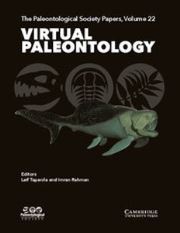Article contents
Calyx plate homologies and early evolutionary history of the Crinoidea
Published online by Cambridge University Press: 21 July 2017
Abstract
New, competing ideas on crinoid plate circlet homologies and the desire for a phylogenetically-based classification have led to a reexamination of the Crinoidea. The most primitive crinoids had four plate circlets, from bottom to top: lintels, infrabasals, basals, and radials. Dicyclic camerates, cladids, flexibles, and dicyclic articulates are composed of infrabasals, basals, and radials. Monocyclic camerates and monocyclic articulates are composed of basals and radials. These all follow traditional ideas on homologies. In contrast, disparids with “compound radials” are composed of lintels, infrabasals, and radials, rather than “basals,” “inferradials,” and “superradials;” and disparids without “compound radials” have lintels and infrabasals rather than “basals” and “radials.”
Parsimony-based phylogenetic interpretation of Ordovician crinoids with rhombiferans as the outgroup shows that crinoids are divisible into six clades, two paraphyletic and four monophyletic, including four-circlet crinoids, cladids, disparids, camerates, flexibles, and articulates.
- Type
- Research Article
- Information
- The Paleontological Society Papers , Volume 3: Geobiology of Echinoderms , October 1997 , pp. 289 - 304
- Copyright
- Copyright © 1997 by The Paleontological Society
References
- 4
- Cited by


